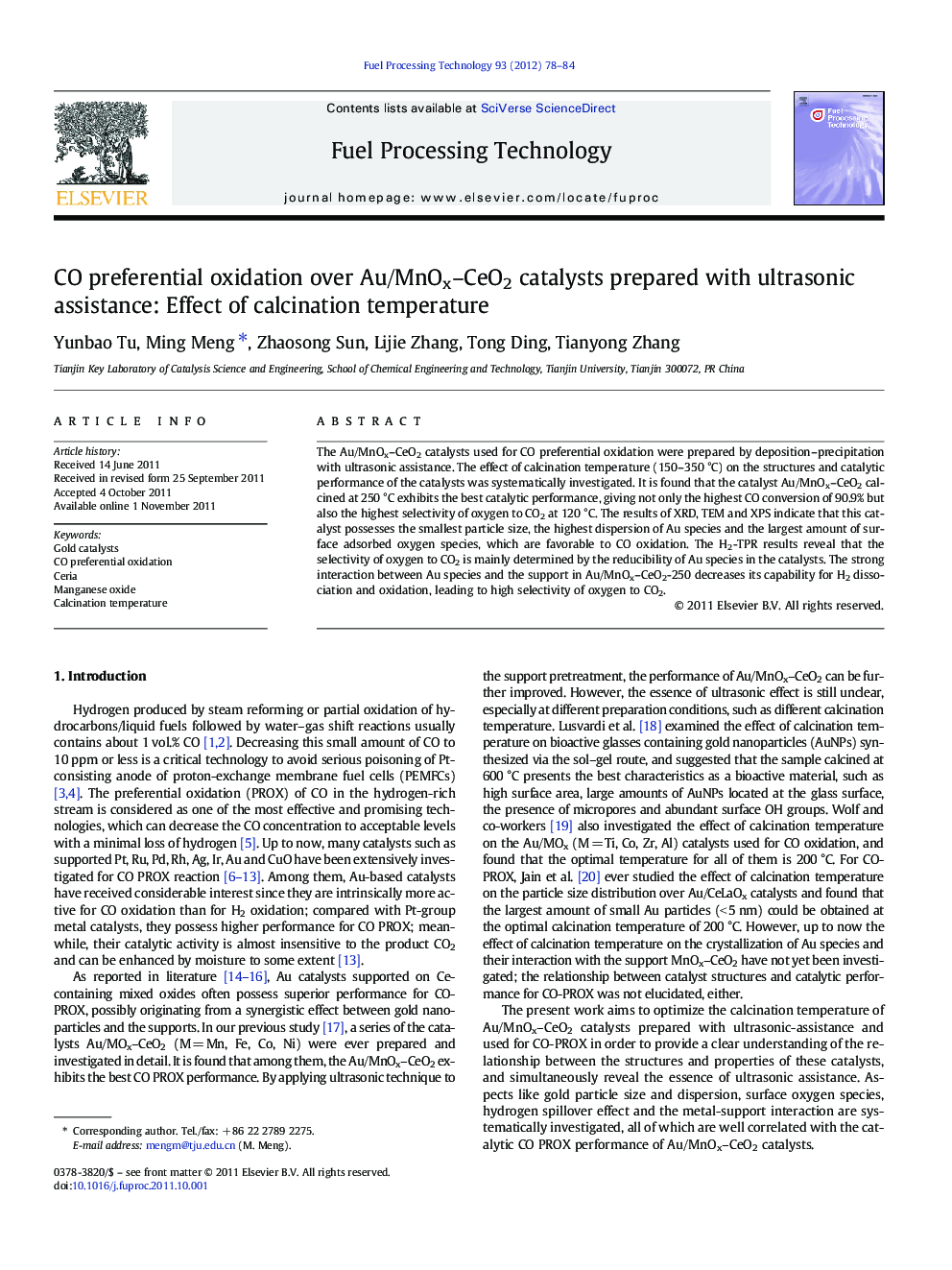| Article ID | Journal | Published Year | Pages | File Type |
|---|---|---|---|---|
| 210552 | Fuel Processing Technology | 2012 | 7 Pages |
The Au/MnOx–CeO2 catalysts used for CO preferential oxidation were prepared by deposition–precipitation with ultrasonic assistance. The effect of calcination temperature (150–350 °C) on the structures and catalytic performance of the catalysts was systematically investigated. It is found that the catalyst Au/MnOx–CeO2 calcined at 250 °C exhibits the best catalytic performance, giving not only the highest CO conversion of 90.9% but also the highest selectivity of oxygen to CO2 at 120 °C. The results of XRD, TEM and XPS indicate that this catalyst possesses the smallest particle size, the highest dispersion of Au species and the largest amount of surface adsorbed oxygen species, which are favorable to CO oxidation. The H2-TPR results reveal that the selectivity of oxygen to CO2 is mainly determined by the reducibility of Au species in the catalysts. The strong interaction between Au species and the support in Au/MnOx–CeO2-250 decreases its capability for H2 dissociation and oxidation, leading to high selectivity of oxygen to CO2.
Graphical abstractFigure optionsDownload full-size imageDownload as PowerPoint slideHighlights► Au/MnOx–CeO2 catalysts are prepared by a novel ultrasonic-assisted DP method. ► The sample Au/MnOx–CeO2 calcined at 250 °C shows the highest CO PROX performance. ► The selectivity of O2 to CO2 is mainly determined by the reducibility of Au species. ► Ultrasonic increases Au-support interaction, inhibiting H2 activation and oxidation.
